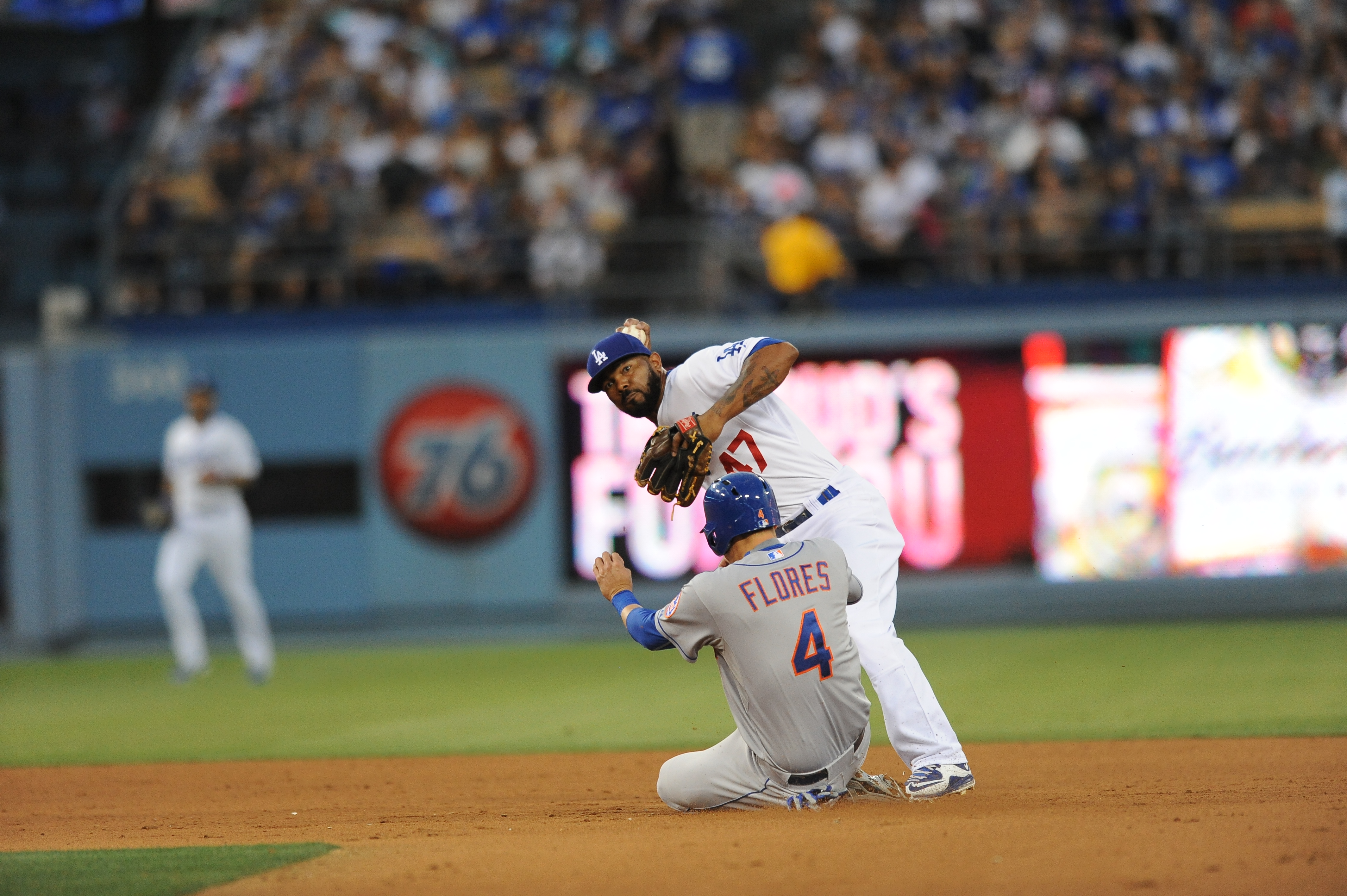By Jon Weisman
The neighborhood play at second base is now subject to review, as part of a series of rules tweaks jointly announced today by Major League Baseball and the Major League Baseball Players Association today and blessed by the World Umpires Association.
The most significant involves plays at second base, and new guidelines have been posted for both baserunners and infielders.
Runners must make a “bona fide” attempt to reach and remain on the base. The slide (contact with the cround) must begin before reaching the base, and the base must be touchable with a hand or foot. Except for home plate, baserunners must be able to remain on the base after completion of the slide.
They can initiate contact, but they are specifically prohibited from changing their path or using a roll block.
Potential violations will be reviewable by instant replay — but so will previously exempt “neighborhood play” calls, in which a middle infielder could glide across the base before catching the ball to turn a double play. Policing the neighborhood play, on first glance, would appear to have the most dramatic effect on the game as we’ve known it.
Here’s how a “bona fide” slide is defined in new Rule 6.01(j). It occurs when the runner:
- begins his slide (i.e., makes contact with the ground) before reaching the base
- is able and attempts to reach the base with his hand or foot
- is able and attempts to remain on the base (except home plate) after completion of the slide
- slides within reach of the base without changing his pathway for the purpose of initiating contact with a fielder.
Interference will not be called “where a runner’s contact with the fielder was caused by the fielder being positioned in (or moving into) the runner’s legal pathway to the base,” MLB said.
If the rule is violated, both the baserunner and the batter-runner are declared out.
* * *
Also announced today were the following pace of game adaptations. Most noteworthy is that visits to the mound by managers and pitching coaches are subject to a timed 30-second limit.
In addition, a time limit between innings that was introduced last year has been further reduced to 2:05 for locally televised games and 2:25 for nationally televised games, a reduction of 20 seconds each from the 2015 season or more than five minutes per nine-inning game.
Last year, these efforts — in addition to the enhanced enforcement of Rule 5.04(b)(4), encouraging batters to stay in the batters box — helped reduced 6:07 in average game time from 2014 to 2015, from 3:02:21 to 2:56:14.





throwdeuce
Otherwise known as the “Utley Rule”.
Mark Hagerstrom
Legislation after the fact would appear to make Utley’s appeal a slam dunk.
Mark Hagerstrom
Would guess that review of neighborhood play means that it basically no longer exists. It was meant to avoid injuries, so wonder how that will play out.
oldbrooklynfan
It’s good to see baseball doing it’s best to reduce injuries. I guess they’ll have to do a little more work on the neighborhood play.